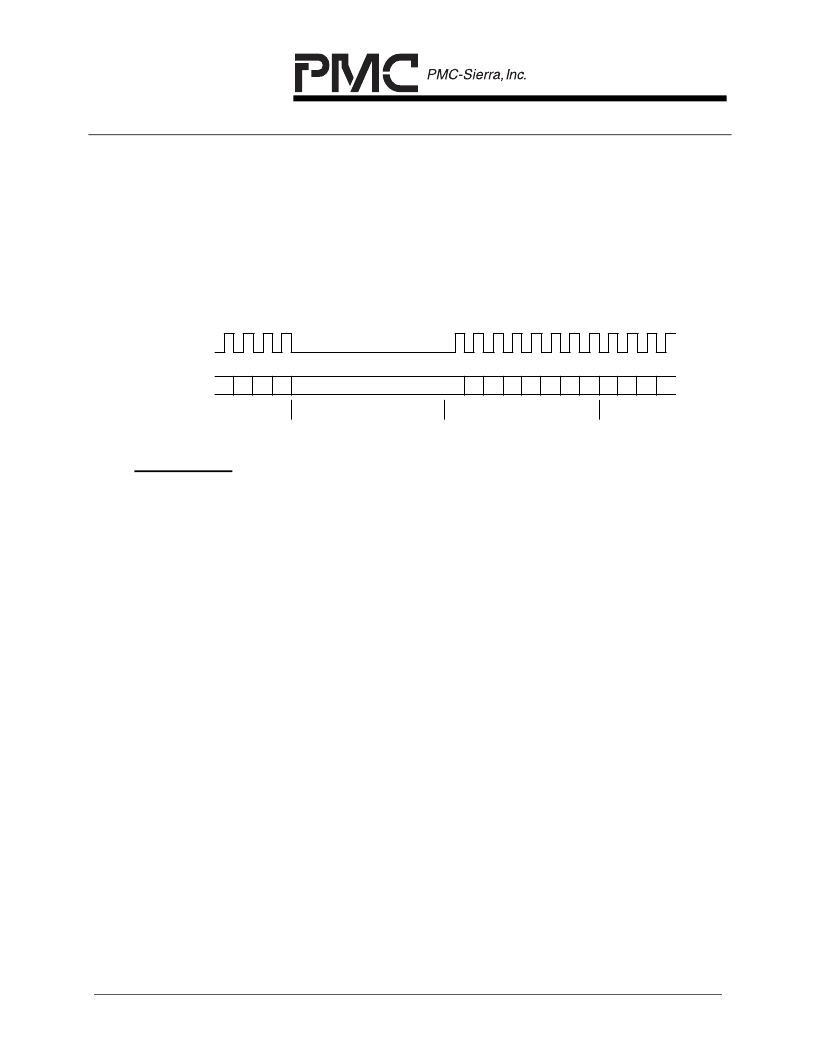- 您現(xiàn)在的位置:買賣IC網(wǎng) > PDF目錄378056 > PM7367 (PMC-Sierra, Inc.) 32 link, 32 Channel Data Link Manager with PCI Interface PDF資料下載
參數(shù)資料
| 型號: | PM7367 |
| 廠商: | PMC-Sierra, Inc. |
| 英文描述: | 32 link, 32 Channel Data Link Manager with PCI Interface |
| 中文描述: | 32連接,32通道數(shù)據(jù)鏈路管理器與PCI接口 |
| 文件頁數(shù): | 301/323頁 |
| 文件大?。?/td> | 2429K |
| 代理商: | PM7367 |
第1頁第2頁第3頁第4頁第5頁第6頁第7頁第8頁第9頁第10頁第11頁第12頁第13頁第14頁第15頁第16頁第17頁第18頁第19頁第20頁第21頁第22頁第23頁第24頁第25頁第26頁第27頁第28頁第29頁第30頁第31頁第32頁第33頁第34頁第35頁第36頁第37頁第38頁第39頁第40頁第41頁第42頁第43頁第44頁第45頁第46頁第47頁第48頁第49頁第50頁第51頁第52頁第53頁第54頁第55頁第56頁第57頁第58頁第59頁第60頁第61頁第62頁第63頁第64頁第65頁第66頁第67頁第68頁第69頁第70頁第71頁第72頁第73頁第74頁第75頁第76頁第77頁第78頁第79頁第80頁第81頁第82頁第83頁第84頁第85頁第86頁第87頁第88頁第89頁第90頁第91頁第92頁第93頁第94頁第95頁第96頁第97頁第98頁第99頁第100頁第101頁第102頁第103頁第104頁第105頁第106頁第107頁第108頁第109頁第110頁第111頁第112頁第113頁第114頁第115頁第116頁第117頁第118頁第119頁第120頁第121頁第122頁第123頁第124頁第125頁第126頁第127頁第128頁第129頁第130頁第131頁第132頁第133頁第134頁第135頁第136頁第137頁第138頁第139頁第140頁第141頁第142頁第143頁第144頁第145頁第146頁第147頁第148頁第149頁第150頁第151頁第152頁第153頁第154頁第155頁第156頁第157頁第158頁第159頁第160頁第161頁第162頁第163頁第164頁第165頁第166頁第167頁第168頁第169頁第170頁第171頁第172頁第173頁第174頁第175頁第176頁第177頁第178頁第179頁第180頁第181頁第182頁第183頁第184頁第185頁第186頁第187頁第188頁第189頁第190頁第191頁第192頁第193頁第194頁第195頁第196頁第197頁第198頁第199頁第200頁第201頁第202頁第203頁第204頁第205頁第206頁第207頁第208頁第209頁第210頁第211頁第212頁第213頁第214頁第215頁第216頁第217頁第218頁第219頁第220頁第221頁第222頁第223頁第224頁第225頁第226頁第227頁第228頁第229頁第230頁第231頁第232頁第233頁第234頁第235頁第236頁第237頁第238頁第239頁第240頁第241頁第242頁第243頁第244頁第245頁第246頁第247頁第248頁第249頁第250頁第251頁第252頁第253頁第254頁第255頁第256頁第257頁第258頁第259頁第260頁第261頁第262頁第263頁第264頁第265頁第266頁第267頁第268頁第269頁第270頁第271頁第272頁第273頁第274頁第275頁第276頁第277頁第278頁第279頁第280頁第281頁第282頁第283頁第284頁第285頁第286頁第287頁第288頁第289頁第290頁第291頁第292頁第293頁第294頁第295頁第296頁第297頁第298頁第299頁第300頁當(dāng)前第301頁第302頁第303頁第304頁第305頁第306頁第307頁第308頁第309頁第310頁第311頁第312頁第313頁第314頁第315頁第316頁第317頁第318頁第319頁第320頁第321頁第322頁第323頁

DATA SHEET
PM7367 FREEDM-32P32
ISSUE 2
PMC-1991499
FRAME ENGINE AND DATA LINK MANAGER
PROPRIETARY AND CONFIDENTIAL TO PMC-SIERRA, INC., AND FOR ITS CUSTOMER’S INTERNAL USE
287
TCLK[n]. A high level, effected by extending the high phase of bit B8 of time-slot
31, is equally acceptable. In channelised E1 mode, TCLK[n] can only be gapped
during the framing byte. It must be active continuously at 2.048 MHz during all
time-slot bits. Time-slots that are not provisioned to belong to any channel
(PROV bit in the corresponding word of the transmit channel provision RAM in
the TCAS block set low) transmit the contents of the Idle Time-slot Fill Data
register.
Figure 27 – Channelised E1 Transmit Link Timing
TCLK[n]
TD[n]
B6 B7
B1
B2 B3
TS 31
FAS / NFAS
TS 1
B8
B4 B5 B6 B7 B8 B1 B2 B3 B4
TS 2
13.3 PCI Interface
A PCI burst read cycle is shown In Figure 28. The cycle is valid for target and
initiator accesses. The target is responsible for incrementing the address during
the data burst. The 'T' symbol stands for a turn around cycle. A turn around
cycle is required on all signals which can be driven by more than one agent.
During Clock 1, the initiator drives FRAMEB to indicate the start of a cycle. It
also drives the address onto the AD[31:0] bus and drives the C/BEB[3:0] lines
with the read command. In the example below, the command would indicate a
burst read. The IRDYB, TRDYB and DEVSELB signals are in turnaround mode
(i.e. no agent is driving the signals for this clock cycle). This cycle on the PCI
bus is called the address phase.
During Clock 2, the initiator ceases to drive the AD[31:0] bus in order that the
target can drive it in the next cycle. The initiator also drives the C/BEB[3:0] lines
with the byte enables for the read data. IRDYB is driven active by the initiator to
indicate it is ready to accept the data transfer. All subsequent cycles on the PCI
bus are called data phases.
During Clock 3, the target claims the transaction by driving DEVSELB active. It
also places the first data word onto the AD[31:0] bus and drives TRDYB to
indicate to the initiator that the data is valid.
During Clock 4, the initiator latches in the first data word. The target negates
TRDYB to indicate to the initiator that it is not ready to transfer another data
word.
相關(guān)PDF資料 |
PDF描述 |
|---|---|
| PM7375 | ATM SAR and PHY Processor for PCI Bus |
| PM7375-SC | LOCAL ATM SAR & PHYSICAL LAYER |
| PM7380 | FRAME ENGINE AND DATA LINK MANAGER 32P672 |
| PM7380-PI | FRAME ENGINE AND DATA LINK MANAGER 32P672 |
| PM7381 | Frame Engine and Data Link Manager |
相關(guān)代理商/技術(shù)參數(shù) |
參數(shù)描述 |
|---|---|
| PM7367-PI | 制造商:PMC 制造商全稱:PMC 功能描述:FRAME ENGINE AND DATA LINK MANAGER |
| PM-737 | 制造商:Eclipse Tools 功能描述: |
| PM7375 | 制造商:PMC 制造商全稱:PMC 功能描述:LOCAL ATM SAR & PHYSICAL LAYER |
發(fā)布緊急采購,3分鐘左右您將得到回復(fù)。